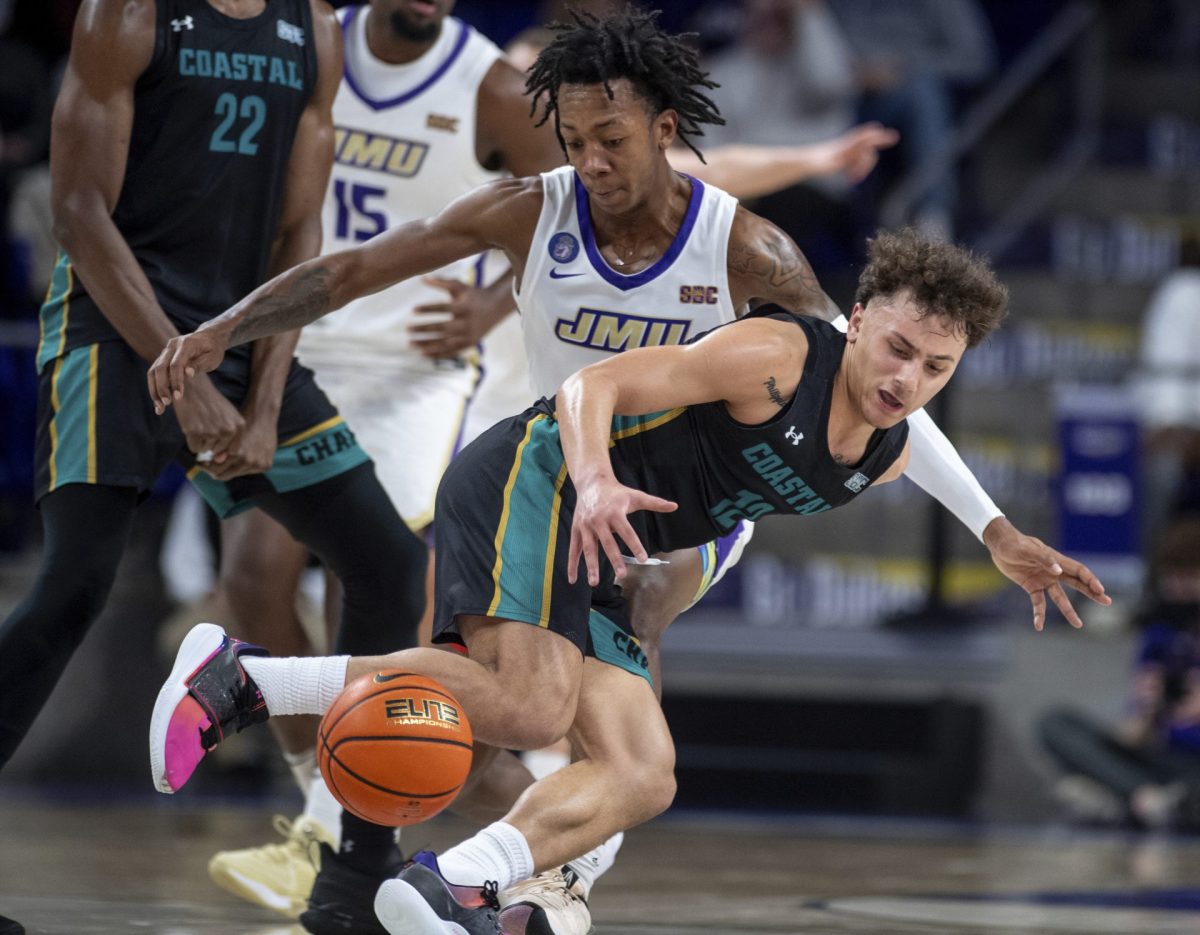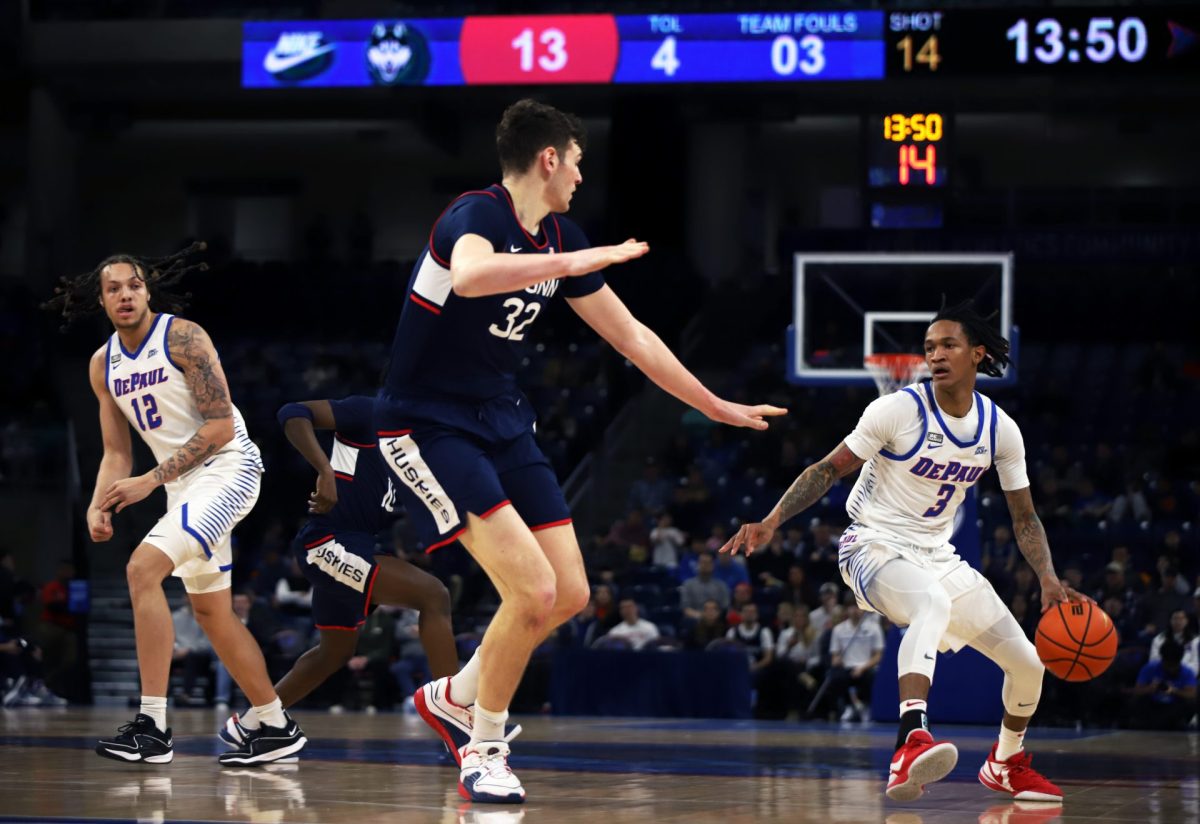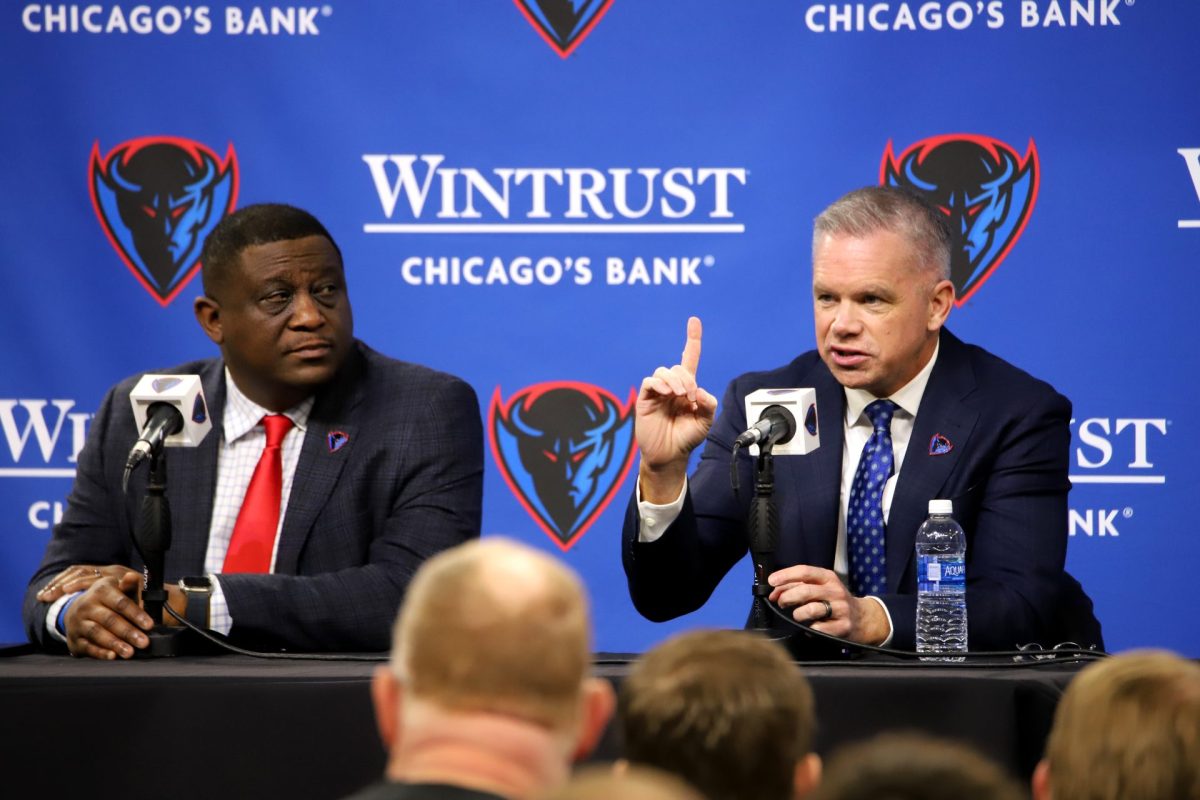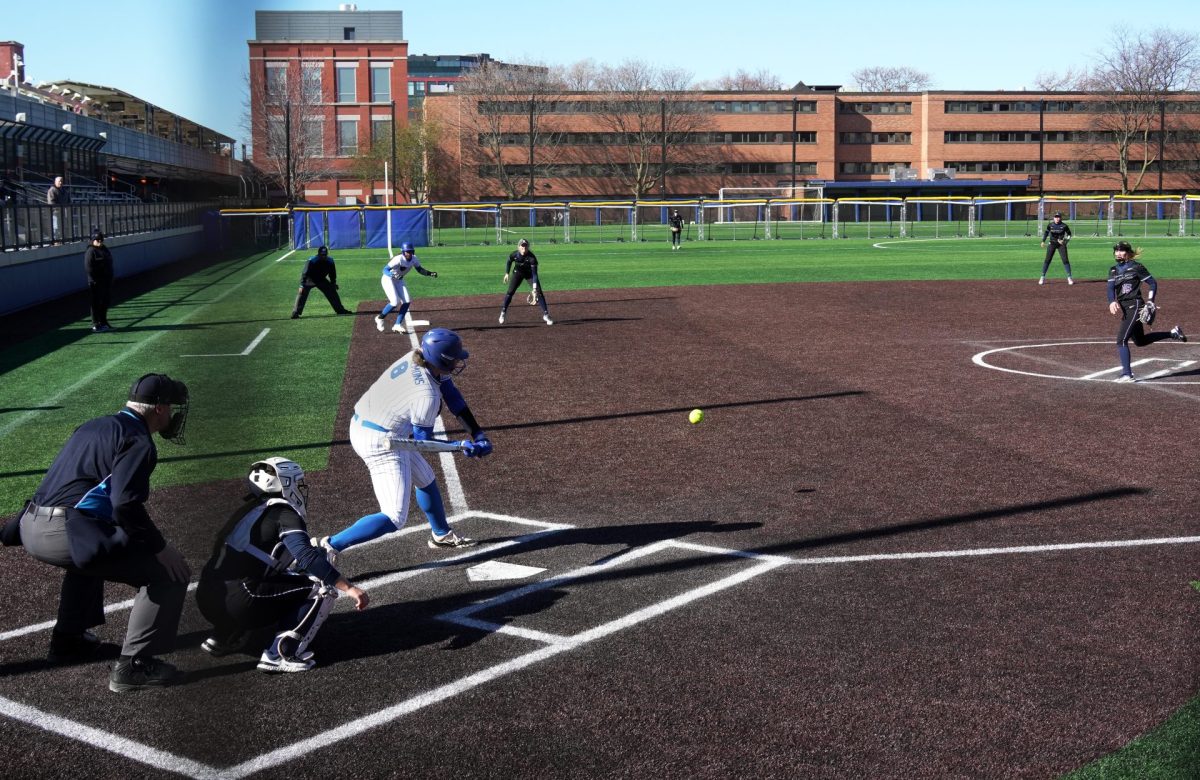If you were to ask the officers of DePaul Club Tennis to describe the transformation the program has seen in just a few short years, the adjectives you’ll get will vary, but the sentiment is the same.
“Ridiculous,” said Jon Mulvey, the club’s president.
“Explosive,” said Reid Mutschler, the VP.
“Yeah, that’s the one,” Mulvey said of Mutschler’s description, smiling.
From near extinction as a program – due to a lack of funding, a lack of interest, and a lack of properly filed paperwork – to being named the 2013 USTA Midwest Club of the Year, the growth of Club Tennis is remarkable as the team looks to compete in nationals in April.
“Reid and I expected it to get bigger this year, but neither of us were expecting it to be this big this quickly,” said Mulvey, a tennis management major in the School of New Learning.
Club Tennis has had about 60 different members – combined male and female – between the Autumn and Winter quarters, while the travel team has posted an overall record of 23-6 this season.
But such figures took hard work to reach, Mulvey said.
First came getting a fledgling club together in 2010, according to Mutschler, a senior honors finance major. After seeking out Club Tennis as an incoming freshman, Mutschler was tasked with restarting the club.
“As an incoming freshman that’s a big task because usually at the Involvement Fair you’re on the other side of the table looking to join a club,” he said. “I was there starting a club and getting new members, which is pretty intimidating your first couple weeks of college.”
The club started to get a regular practice schedule going, playing mostly on Tuesdays and Thursdays at outdoor courts such as the ones at Oz Park – whenever weather, lighting and court availability permitted.
Club Tennis didn’t compete in any competitions that year, but by the next year, had a core group of 10 to 12 players and competed in the Badger Classic – the club’s first competition in “quite a few years,” according to Mutschler. The team finished tied for 24th out of 32 teams, but the experience of the competition helped create a level of unity with the members, Mulvey said.
“We had so much fun at that Badger Classic,” he said. “It was such a great bonding experience. Going into it, none of us were really that close with each other, but after we become best friends and it was really great.”
“From there, we decided to really put the effort forth and expand the club as much as possible going into this year,” Mutschler added. “And it really paid off.”
The travel team finished the 2011-2012 season with a record of 13-7. The experience of the Badger Classic behind them and with a push to grow the club, Mulvey – who became club president in January 2012 – and Mutschler came into this season with a practice plan for 24 to 28 players to practice at Midtown Athletic Club, located at the corner of Fullerton and Damen. Those plans had to be scrapped as 42 attended the first practice.
“We totally winged it that first practice because there were so many,” Mulvey said. “It was unexpected. But, we made it work.”
Such an increase in turnout came as a surprise, as Mulvey said the club likes “flying under the radar.
“We don’t really push for new members – we sort of let them come to us. Usually, once they find us, they’re hooked,” he said.
The club’s website– designed by Mulvey himself – helps bring in traffic, as does Club Tennis’ active social media presence on Facebook and Twitter, not to mention a YouTube channel which has had more than 6,800 views.
“We let people engage the social media at their pace,” Mulvey said. “I’ll post something and I’ll let them respond to it as they scroll along during whatever they normally scroll. [It] has definitely helped with recruitment because it allows prospective members to see what we’re all about.”
The increased membership was quickly followed by results on the court in the Midwest League: The travel team is currently 23-6, including wins over quality clubs like Minnesota, Illinois and Michigan State, and this season also marked the first time in club history the team beat Northwestern.
“The Midwest section has always been dominated by Big Ten schools because of the sheer depth of talent at their universities,” Mulvey said. “It’s extremely difficult to compete with clubs four or five times your size. This year, we’ve worked extremely hard and improved to a point where we’re now right at their level… That’s a huge gap to makeup in the span of 12 months.”
At this year’s Badger Classic, the team jumped from 24th a year ago to tied for 7th this time around.
“To progress that far is huge, ” Mulvey said. “No other club in the Midwest has even come close to progressing that far in such a short period.”
Such progress was a big factor in Club Tennis being named Midwest Club of the Year. Based on wide-ranging list of qualifications – from marketing and fundraising strategies, to results and improvements, to membership growth and retention, to online presence – the award was handed out to the club at the Midwest Championship in February. As a result of the award, the club received an automatic bid to compete in nationals from April 11-13 in Surprise, Ariz.
According to Mulvey, 15 members from the travel squad have already committed for the trip. Due to competition limits, only 10 will play, while the others will “support the club,” he said.
Supporting the club is not always something that’s easy to do, however. Each member of Club Tennis has to pay quarterly dues of $40, which help cover the costs of apparel, court rental fees and other expenses, while travel team members have to pay additional fees based on the number of events they attend.
This year, the club has taken advantage of Student Activity Fee Board (SAF-B) funding to alleviate some of the costs, Mulvey said.
“It’s a great resource that a lot of clubs don’t use,” he said. “If you’re organized and have sensible requests which serve to better the DePaul community, there are funds available for club use.”
In addition to the cost factor, the practices are late at night, with the team taking the 74 bus down Fullerton to practice a few days a week starting at 10 p.m. and not ending until midnight or later.
But to the members of Club Tennis, things like dues and late hours are small sacrifices to make to continue playing tennis.
“I knew I didn’t want to stop playing tennis [after high school], and when I came out to the first practice, I immediately saw the high level of tennis here,” said Andrea Kinnerk, a freshman on the travel team. “I honestly thought it was going to be terrible. I was beyond pleasantly surprised. Not only are the practices fun and getting to compete against other teams is great, but also just the friendships you make on the team is something I never really expected. I honestly couldn’t be happier that I found club tennis. It keeps me playing at a surprisingly high competitive level.”
Most Club Tennis players like Kinnerk – who tried out for DePaul’s women’s varsity team as a walk-on – have ample experience in high school and junior competitive tournaments. According to Mulvey, most the members could have played D-III tennis if they had wanted to.
“For one reason or another, we each didn’t want to make a full-time commitment to tennis. That’s where club tennis comes in,” he said. “We all love the game – we can still play on a regular basis, compete a few weekends a month, but it doesn’t have to consume our lives. Our players have the pedigree to be successful. Tennis is in our blood.
“The great thing about playing club tennis is that it can be whatever you want it to be,” he added. “It’s entirely open-ended. You can choose to play once a week at our indoor practices, or, if you were truly committed like a lot of us are, you could practice three times a week and compete on the weekends. You won’t be kicked out of the club if your schedule changes and you can’t make it to Tuesday night practices. I just want you to enjoy the game.”
For the officers of Club Tennis, running the club is a labor of love between going to classes, working, practicing and competing.
“You can always manage it, squeeze out some time in your schedule for a few hours if it’s something that you love doing, which I definitely do,” said Multscher, who took 26 credit hours this quarter.
“I have a list of priorities in my head, and Club Tennis is probably No. 1,” Mulvey said. “Which is sad to say that my classes aren’t first at DePaul, but in the end, I will do the work, I will pass all my classes and get good grades. I’m just gonna make it difficult on myself.
“But it’s absolutely worth it to see the kids – I call them my kids because I’m 26 and they’re all like 19 or 20 years old – to see them come together as a team. To see them come together at sectionals was amazing. To see all the work we put in this year pay off by having the Midwest board recognize us was fantastic. It makes all the headaches, the long nights spent updating websites at 5 o’clock in the morning, it makes all that totally worth it.”







